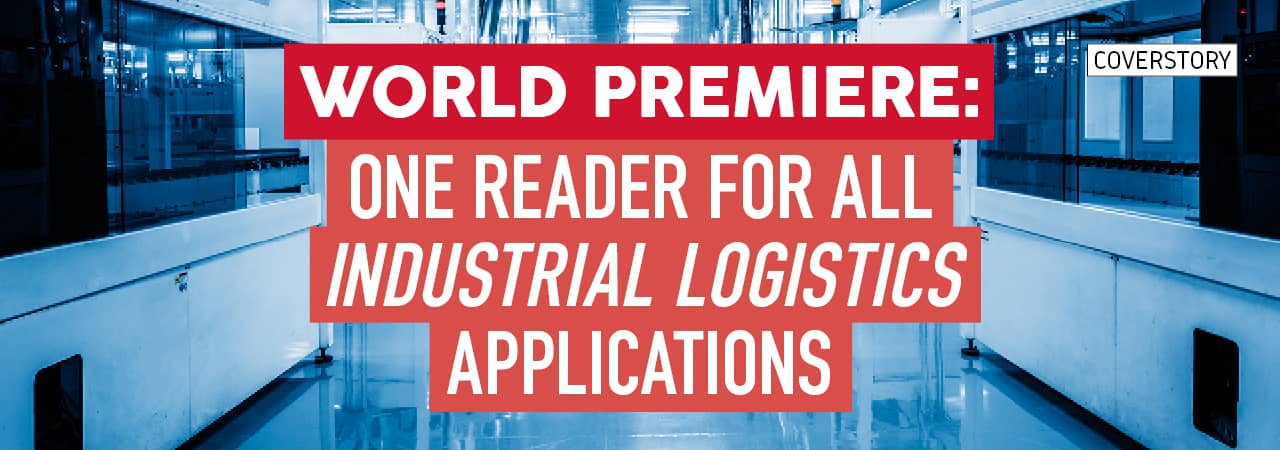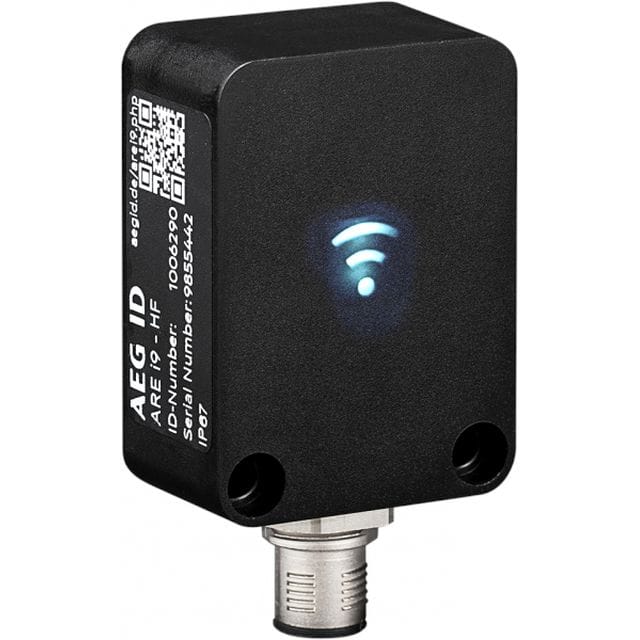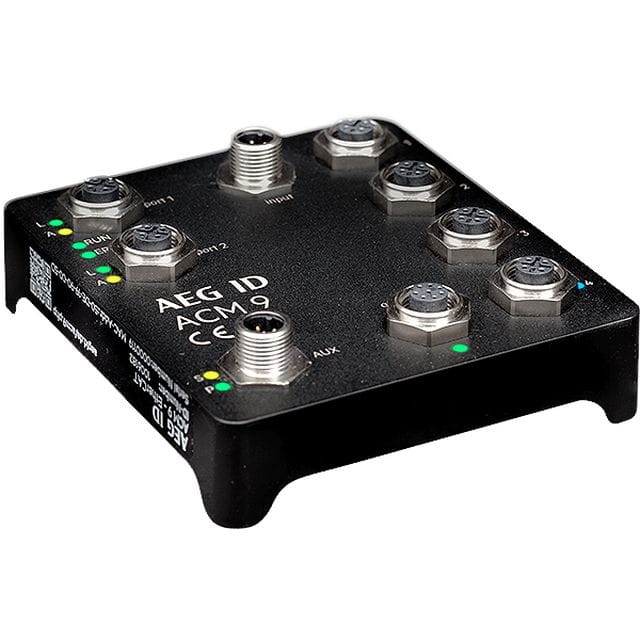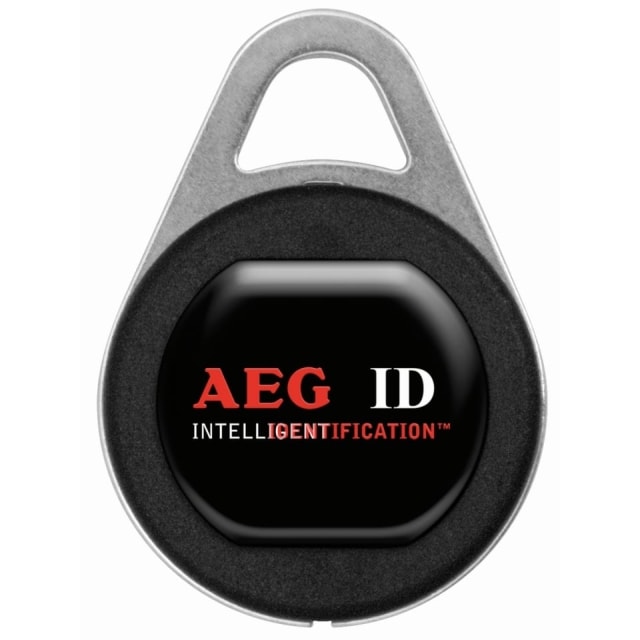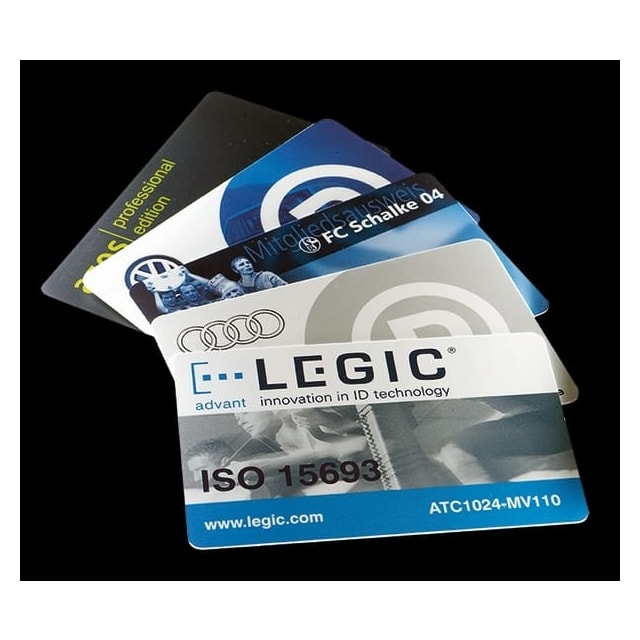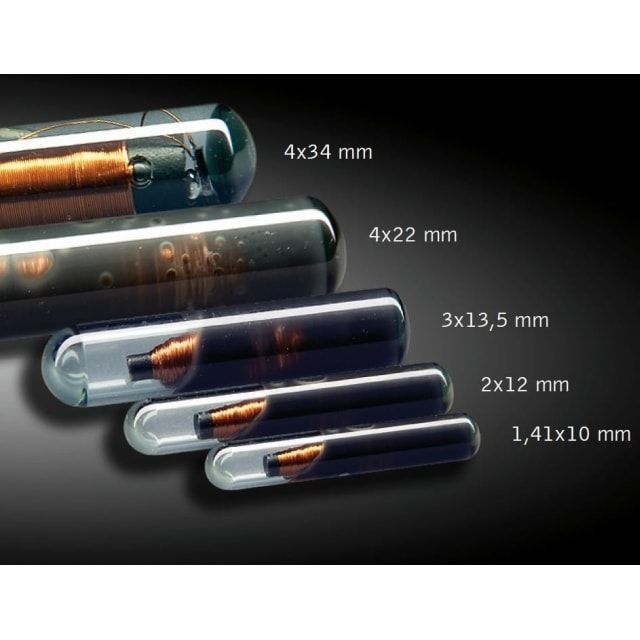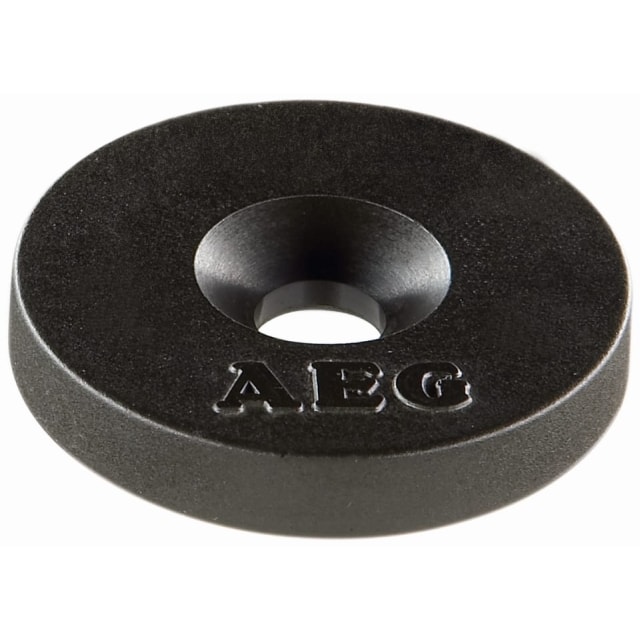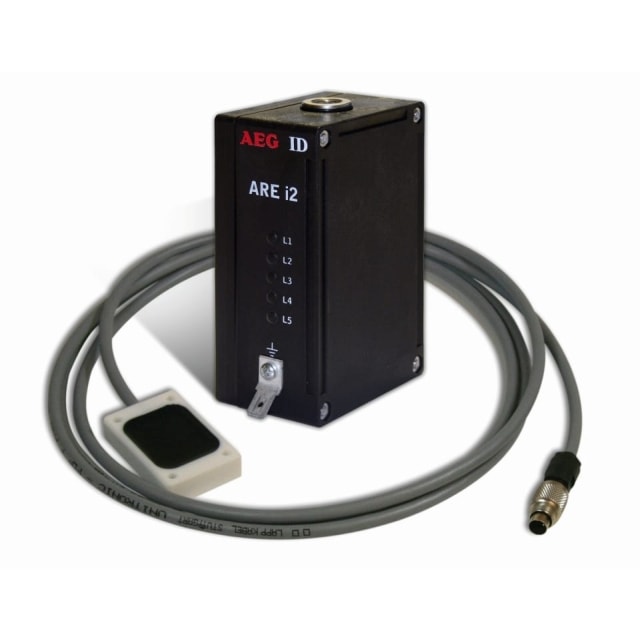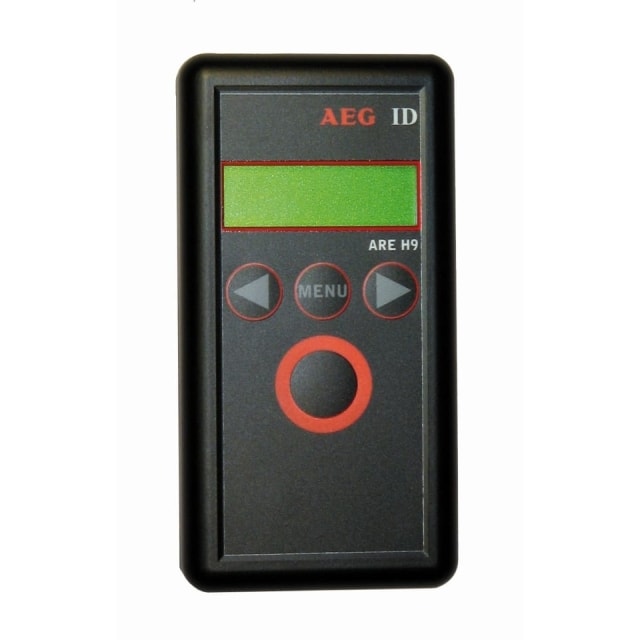ARE i9 – The New RFID Reader for Industry and Logistics
AEG ID launches new RFID reader as LF and HF variant together with a new communication module and opts for a new development approach.
AEG ID has been developing and producing RFID hardware since 1989. New readers in the LF, HF and UHF frequencies are regularly presented, which are used worldwide in industry and logistics, or in maintenance and servicing. A new reader will be launched on the market in 2020 that for the first time, is based on a new development concept as the result of RFID know-how built up over decades.
Reason enough for RFID & Wireless IoT Global to ask Simon Arch, Marketing & Sales Director at AEG ID about what the new ARE i9 device – also in conjunction with the new ACM 9 communication module – can do, for which applications it is suitable for, why the 'normal' development period of 18 months for this device was not sufficient, and what expansions are planned for the new product family in 2021.
Simon Arch, Marketing & Sales Director, AEG ID, in an interview with RFID & Wireless IoT Global.
The ARE i9 is a Breakthrough
The product development approach, which has been tried and tested for more than 30 years, was completely 'turned inside out' by AEG ID about two years ago. The result: The ARE i9 reader – available as LF RFID and HF RFID variants. According to AEG ID, a unique selling point of the LF RFID reader variant is that all common algorithms – Trovan PSK, ASK, ISO FDX-B, HDX and others – have been integrated into a single reader. The previous approach, also by AEG ID, involved the integration of one or at most two algorithms in a single reader.
In principle, all the requirements of machine and equipment manufacturers and system integrators were met. The disadvantage was that a specific reader had to be used for each LF algorithm, for each LF technology. Companies using the readers were required to stock up on different readers in order to be able to use them at short notice depending on the application requirements. If the stored devices are not used or used only in small quantities, an unnecessary capital commitment takes place.
ARE i9 – The New RFID Reader for Industry and Logistics
- All LF algorithms in one device
- Compact design for machine integration
- Control connection via ASCII commands
- Individually configurable LED
ACM 9 – Communication Module Combines HF and LF Technologies
- Up to four readers can be connected to one module
- Interfaces like Profinet, EtherNet/IP and EtherCAT are integrated
- Combination of LF and HF readers streamlines hardware application
- Plug and play for device replacement without reconfiguration
Compact Measurements for the Smallest Installation Spaces
With housing measurements of 55 by 42 by 23 millimeters, the ARE i9 is expected to be one of the most compact industrial readers on the market. The compact design was requested by customers who do not have much space inside a machine, but still require a certain reading position. Furthermore, the environment requires the devices to be directly mountable on metal. According to Simon Arch, LF RFID is still widely used in this application environment. However, HF RFID is increasingly in demand for identical applications.
The reason for this: End customers want to be able to capture tagged product carriers or magazines with an NFC-enabled smartphone. In terms of application and operation, the HF and LF variants are almost identical, and both technologies can be operated in parallel via the ACM 9 communication module, which was also newly developed.
ACM 9 – Up to Four Readers on One Module
The ARE i9 reader is one half of the innovation premiere in the AEG ID portfolio. With the newly developed communication module, the company guarantees the connection of up to four HF or LF readers. According to Simon Arch, the combination options of the two technologies are in massive demand. The integrators require this flexibility in order to implement, for example, product identification in a machine with LF and operator registration on the machine with HF using streamlined hardware.
The ACM 9 comes with an update to the latest interfaces such as Profinet, EtherNet/IP, EtherCAT and others. The whole construction is designed for plug and play. In case a device is exchanged or an additional one is added, it is simply plugged in. Configuration is not necessary. Anyone can do this without being specially trained for it.
Application Focus: Smart Factory, Recycling Management and More!
The ARE i9 is specially designed to be used in all production logistics processes. The application spectrum ranges from process automation, production tracking, component tracking, warehouse management to intralogistics. In these applications, not only are the products themselves identified, but also SLCs, magazines or product carriers on the conveyor system or directly in production machines.
Another field of application for the ARE i9 is container and waste management. As with industrial identification, compact, robust and flexible identification solutions are required in this area of application. AEG ID intends to meet precisely these requirements with the ARE i9 – in combination with the ACM 9.
Market Launch of Both New Devices in the Fourth Quarter of 2020
One of the longest product development periods is heading straight for the finish line. The jump over the last hurdle has already been set. With the national and international approvals and certifications, the AEG ID team kicked off in mid-August. All necessary certificates will thus be available by the planned market launch at the end of the year.
The certifications themselves are, despite the special circumstances this year, in the final phase. Due to the effects of the corona pandemic, AEG ID has scheduled more time for these final steps. "From our side, we were able to keep to the schedule. Series production, a prerequisite for approvals, has started," emphasizes Arch.
An Interview with Simon Arch
Mr. Arch, from a development perspective, what is the highlight of the devices that have now been launched?
We have been active in the design and production of RFID hardware for over 30 years. In all our developments, we benefit from the fact that we manufacture both readers and antennas as well as transponders – with the exception of ICs – in-house. In this way, all components of an RFID system can be optimally matched to each other. This supports the performance in real life applications.
The fact that the development of the new devices took considerably more time was the result of a specially chosen approach. The aim was not simply to present a new reader. In this case, the development period would have been completed after only 18 months.
Can AEG ID meet all the demands of machine builders and system integrators with the ARE i9?
We have asked customers and partners worldwide: What do you need? What is not yet available? What would be crucial benefits for you as integrators and equipment manufacturers and also for your end customers? Various companies from numerous sectors of the economy – from the automotive industry to semiconductor manufacturing and the medical sector – have incorporated their specific requirements into the development. With the new reader, we have eliminated all the small hurdles of the past.
The LF version of the ARE i9 is in the spotlight. Can the LF technology keep pace with the requirements of digital transformations in terms of smart factories?
Definitely! Each frequency – LF, HF or UHF – has clearly defined advantages in possible applications. LF RFID is and remains a technology in demand. LF RFID-based solutions in automation in particular have been used 'silently' in machines and conveyor systems worldwide for many years. Every day, millions of load and workpiece carriers are identified via LF RFID in machines and systems.
Up to now, we have continuously optimized existing readers in nuances and adapted them to new requirements. As a result, numerous generations of readers have been developed which have become more powerful from one development step to the next.
Please give an example: Which feature has been directly based on user feedback in the development of the ARE i9?
A feature that is visible at first glance combines functionality and design. Inside the RFID reader is a freely configurable color LED. If the transponder reading is successful, an optical feedback is given. The color is freely configurable in the entire spectrum. This is a feature that customers use to implement their corporate identity in this area, allowing the LED to shine in corporate colors. Despite the numerous functionalities, the device is very easy to use. Communication with the reader itself is based on simple ASCII commands. Complicated configuration on the computer is unnecessary. The reader simply operates directly on the control unit. This also reduces the integration effort.
Is a UHF RFID variant of the ARE i9 planned?
In the areas in which the ARE i9 is used, the reader consciously and intentionally works in the near field range. In these applications, a 100 percent capture is the main focus. This can best be solved with LF or HF at short distances. However, we would not be known as the company that develops high-performance hardware in all three RFID frequencies if we did not also have a UHF version of the ARE i9 on the agenda.
The first developments and tests have already taken place. As soon as the LF and HF versions are certified, we will begin with the UHF variant, which will be available in 2021. In combination with the ACM 9 and the LF and HF readers in particular, we provide integrators and system engineers with a complete and high-performance hardware family
With the ACM 9, AEG ID brings another product to the market that has never been seen before in the portfolio. What was the trigger for this development?
For the communication module ACM 9, we followed the same approach as for the ARE i9: Transforming the demands from the industry into hardware. The development goal was to construct a device that can process data from both LF and HF readers. Another item on the agenda for this development was to make it as easy as possible for integrators and machine builders to use.
The technology combination opens up numerous options for adding additional features to an RFID system by simply plugging in another reader – for example, to implement an operator registration on a machine via an HF keyfob or the HF employee ID card.
Both devices are entering the market as new standard products. Are customer-specific adaptations still possible?
Based on the intensive preparatory work and numerous discussions with users, we are convinced that the new devices will cover the majority of current applications with the existing features. If, however, adaptations are necessary, we will find a solution. The complete production from the circuit board onwards, takes place in our own company. This enables us to react quickly and flexibly to the respective application adaptation.
Our production takes place in Germany directly at our headquarters in Ulm. As a responsible company, we actively face the challenges of climate protection and sustainability. That is why the new product family, like all our products and locations since 2019, is climate-neutral.


